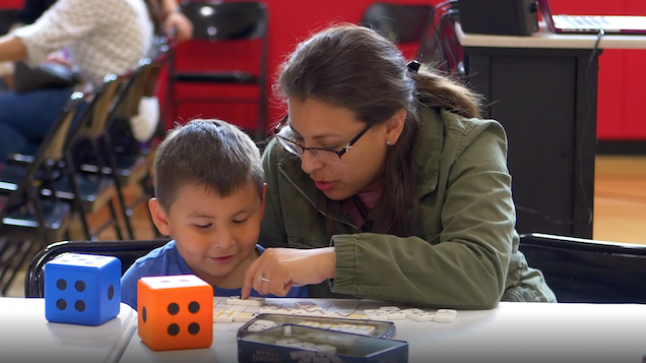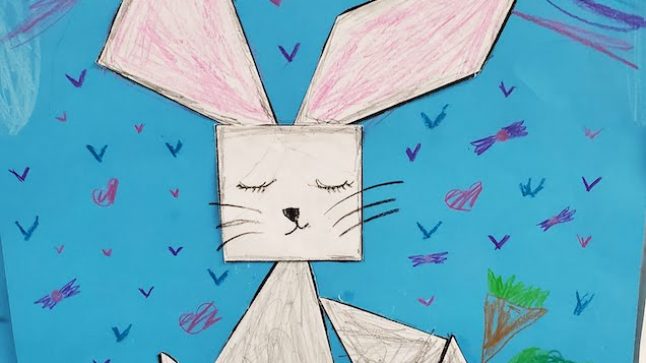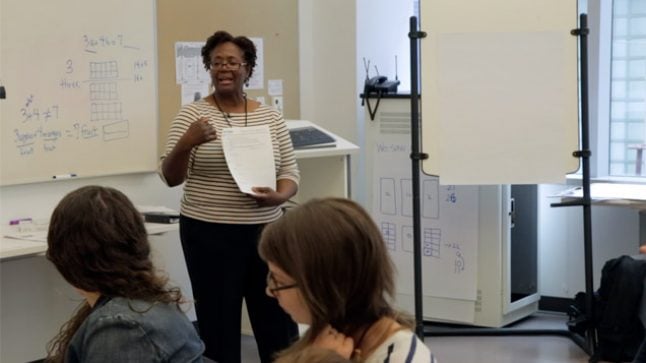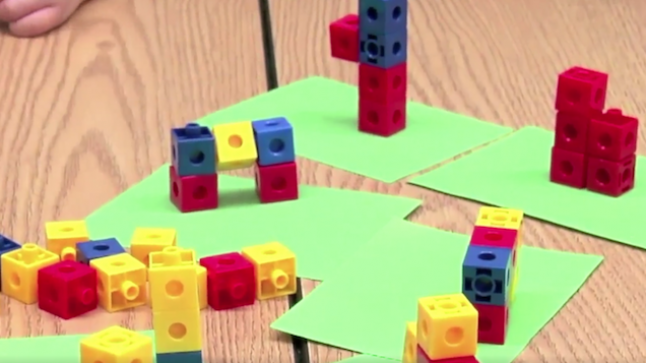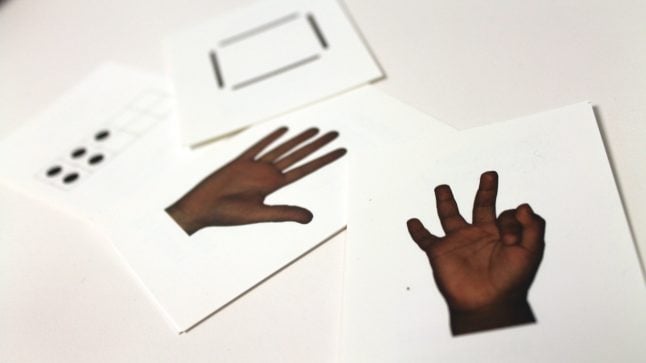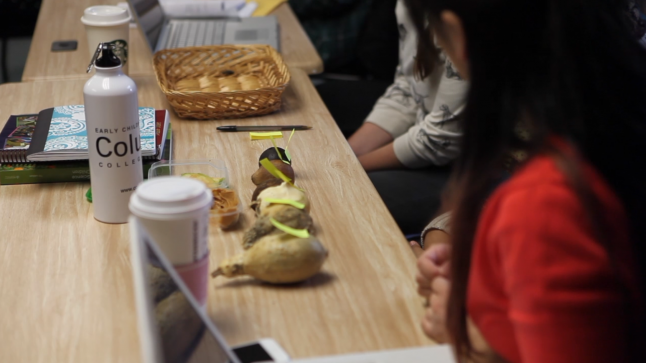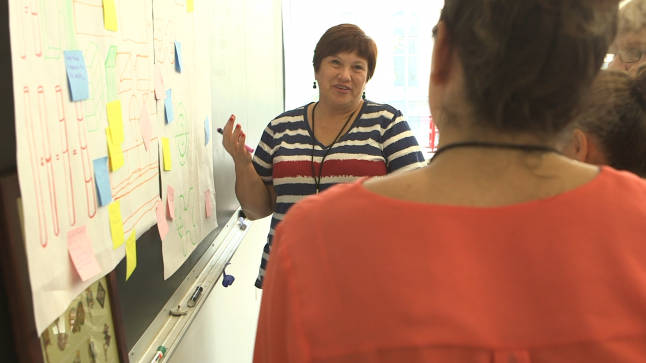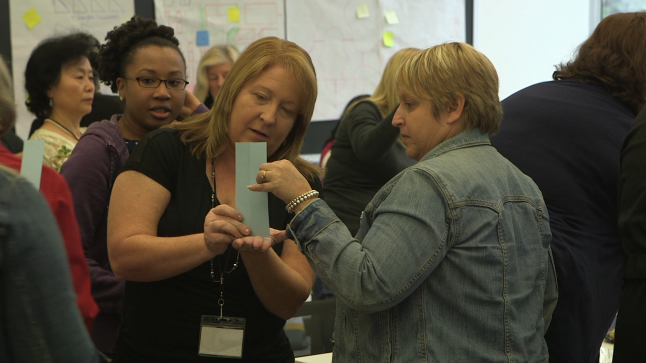Preschool Math
Series: Focus on Collaboration
School Event Engages Families in Early Math Learning
June 19, 2019
Families play a fundamental role in shaping children's interest and skills in math. Schools can help connect the math that exists both in and out of school and nurture families' positive relationship to math.
- Age/Grade Level: Infants, Toddlers, Pre-K, Kindergarten, 1st Grade, 2nd Grade, 3rd Grade
- Tags Family Math, Games
Series: Ideas at Work June 8, 2019
Build Tangram Shapes with Do-It-Yourself Puzzles
A tangram puzzle consists of seven pieces — five triangles and two quadrilaterals made from one square. Tangrams originated in China hundreds of years ago. They traveled to Europe in the 1800’s, where they gained…
- Topic: Spatial Relationships, Shape
- Age/Grade Level: Pre-K, Kindergarten, 1st Grade, 2nd Grade
- Tags Play, Family Math, Grandfather Tang's Story, Ann Tompert
Series: Adult Learning May 30, 2019
Video Analysis of Children’s Mathematical Thinking
Looking at a video from our Focus on the Child series, Collaborative member Donna Johnson leads a discussion about the mathematical thinking of a child during a comparison task. This is an example of how…
- Topic: Number Sense
- Age/Grade Level: Adult Learners, Pre-K, Kindergarten
- Tags video analysis
Series: Adult Learning May 29, 2019
Video Analysis of Preschool Number Sense Activity
Collaborative member Donna Johnson leads teachers in a discussion about an activity designed to build number sense in a video from our Focus on the Lesson series. This is an example of how we use…
- Topic: Number Sense
- Age/Grade Level: Adult Learners, Pre-K, Kindergarten
- Tags video analysis
Series: Focus on Play April 29, 2019
A New Focus for Familiar Card Games
Here you can download cards and simple-to-learn game ideas to help young children build their understanding of early math concepts such as cardinality, composing and comparing numbers, and allowing them to subitize.
- Topic: Number Sense
- Age/Grade Level: Pre-K, Kindergarten
- Tags Subitizing, Play, Games, Equivalence, Dot cards, Family Math, Cardinality, En Español, download
Series: Book Ideas March 24, 2019
3 Books That Encourage Simple Graph Explorations with Young Ones
At the heart of it, graphing in the early years is about quantifying information in order to answer a question. That requires children to organize data in some visible way so that comparisons and generalizations…
- Topic: Data Analysis
- Age/Grade Level: Pre-K, Kindergarten, 1st Grade
- Tags William Steig, Whose Shoes?, Stephen R. Swinburne, Mitsumasa Anno, Anno’s Flea Market, Comparing, Shoes, Graphing, Which Would You Rather Be?
Series: Adult Learning February 27, 2019
Ordering Similar Objects by Measurable Attributes
Early childhood teacher candidates engage in an adult learning activity that has them order and reorder objects by size according to different attributes.
- Topic: Measurement
- Age/Grade Level: Adult Learners, Pre-K, Kindergarten
Series: Adult Learning February 25, 2019
Exploring Unit Block Relationships
Examining sets of unit blocks challenges educators to think about relationships of the blocks. A deeper understanding of the features of unit blocks empowers teachers to support children in ways that promote joyful math learning.
- Topic: Number Operations, Shape
- Age/Grade Level: Adult Learners, Pre-K, Kindergarten
- Tags Blocks
Series: Adult Learning February 25, 2019
Different Uses of Numbers with Anno’s Counting Book
Books are a powerful way to launch math investigations with children, but also with adult learners. Our Learning Labs often use picture books as a doorway into mathematics. Here, teachers explore multiple representations of the…
- Topic: Number Sense
- Age/Grade Level: Adult Learners, Pre-K, Kindergarten
- Tags Mitsumasa Anno, Anno’s Counting Book
Series: Adult Learning February 24, 2019
Math-Related Greeting Builds Safe Learning Community
Our Learning Labs open with greetings that serve the dual purpose of building a safe learning community while introducing a math topic in a fun, accessible way. Here, adults directly compare the lengths of paper…
- Topic: Measurement
- Age/Grade Level: Adult Learners, Pre-K, Kindergarten
Do the math.
Free videos.
Free newsletter packed with ideas.
Free professional learning modules.
